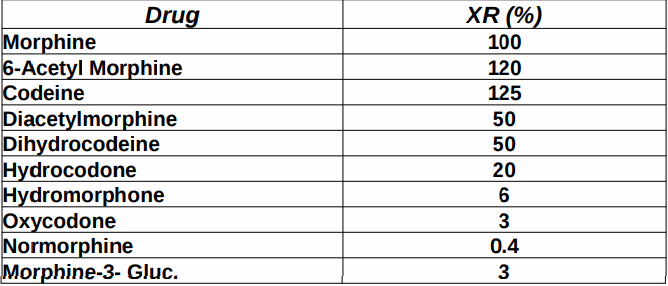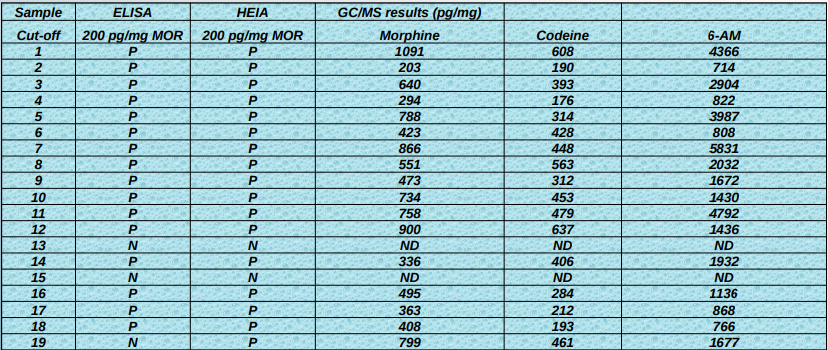A. Agrawal,, M. Vincent, G. Wang, M. Nguyen, C. Castro, C.R. Henry, C. Moore
Immunalysis Corporation, 829 Towne Center Drive, Pomona, CA 91767
Introduction
Hair is a useful specimen for the detection of long-term drug use. In general, drug concentrations in hair are lower than those identified in other matrices (e.g. urine, blood). Specimen volume may be limited, so sensitive screening methods are necessary. Following heroin use, the metabolites detected in hair are 6-AM, morphine and possibly codeine, so a screening immunoassay should be targeted to these analytes.
Methods
● Hair from opiates users (n = 19; 10mg); drug free hair (n = 20; 10mg)
● Cut into small pieces; 0.025 M phosphate buffer added (pH 2.7; 0.5 mL); Incubated (3hrs/75℃)
● Supernatant was analyzed using ELISA; and via homogeneous immunoassays (HEIA) on an Olympus 400 platform
● For ELISA, supernatant was diluted 1:5 with 0.1 M PBS before plating; For HEIA, 20mL of supernatant was used
Cross-reactivity

Results
A screening cutoff of 200 pg/mg of MOR was used, (recommendation Proposed Federal Guidelines 2004)
Precision at 100, 200, 400, 2000 and 5000 pg/mg: 10.7%, 7%, 8.6%, 5.8% and 10.1%
All negative specimens screened negatively using both ELISA and EIA; results of positive specimens shown

Summary
● The assay is precise, sensitive and conducive to rapid hair screening using commercial chemistry analyzers
Disclosure
Immunalysis Corporation manufactures and distributes the immunoassays described in this presentation
SOFT 2008
To view the full study and its data, visit this link.
Looking for equipment or accessories for your homogeneous immunoassay applications? Check out our featured products below.